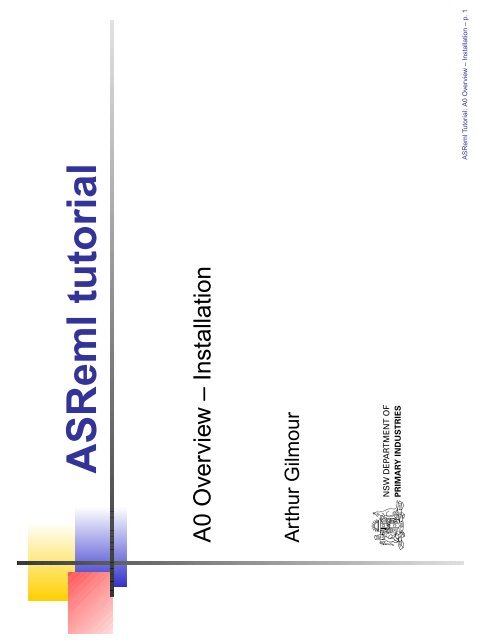

* Henderson (1963) Selection index and expected genetic advance. (1959) The Estimation of environmental and genetic trends from records subject to culling. **The formal proof that solutions in Henderson (1949, 1950) are BLUE and BLUP:** * Henderson (1950) Estimation of genetic parameters. *Journal of Dairy Science (Abstract)* **32** 706 * Henderson (1949) Estimation of changes in herd environment. # This work by Emi Tanaka is licensed under a Creative Commons Attribution-ShareAlike 4.0 International License.Įstimate of fixed effects and prediction of random effects is given by: # These slides may take a while to render properly. # Emi Tanaka School of Mathematics and Statisitcs # Statistical Methods for Omics Assisted Breeding Methods for Omics Assisted BreedingĬlass: split-60 title-slide2 with-border white
What is asreml software#
REML estimation is available in a number of general-purpose statistical software packages, including Genstat (the REML directive), SAS (the MIXED procedure), SPSS (the MIXED command), Stata (the mixed command), JMP (statistical software), and R (especially the lme4 and older nlme packages),Īs well as in more specialist packages such as MLwiN, HLM, ASReml, BLUPF90, wombat, Statistical Parametric Mapping and CropStat. The first description of the approach applied to estimating components of variance in unbalanced data was by Desmond Patterson and Robin Thompson of the University of Edinburgh in 1971, although they did not use the term REML.Ī review of the early literature was given by Harville. The idea underlying REML estimation was put forward by M.

In contrast to the earlier maximum likelihood estimation, REML can produce unbiased estimates of variance and covariance parameters. In particular, REML is used as a method for fitting linear mixed models. In the case of variance component estimation, the original data set is replaced by a set of contrasts calculated from the data, and the likelihood function is calculated from the probability distribution of these contrasts, according to the model for the complete data set. In statistics, the restricted (or residual, or reduced) maximum likelihood ( REML) approach is a particular form of maximum likelihood estimation that does not base estimates on a maximum likelihood fit of all the information, but instead uses a likelihood function calculated from a transformed set of data, so that nuisance parameters have no effect.


 0 kommentar(er)
0 kommentar(er)
